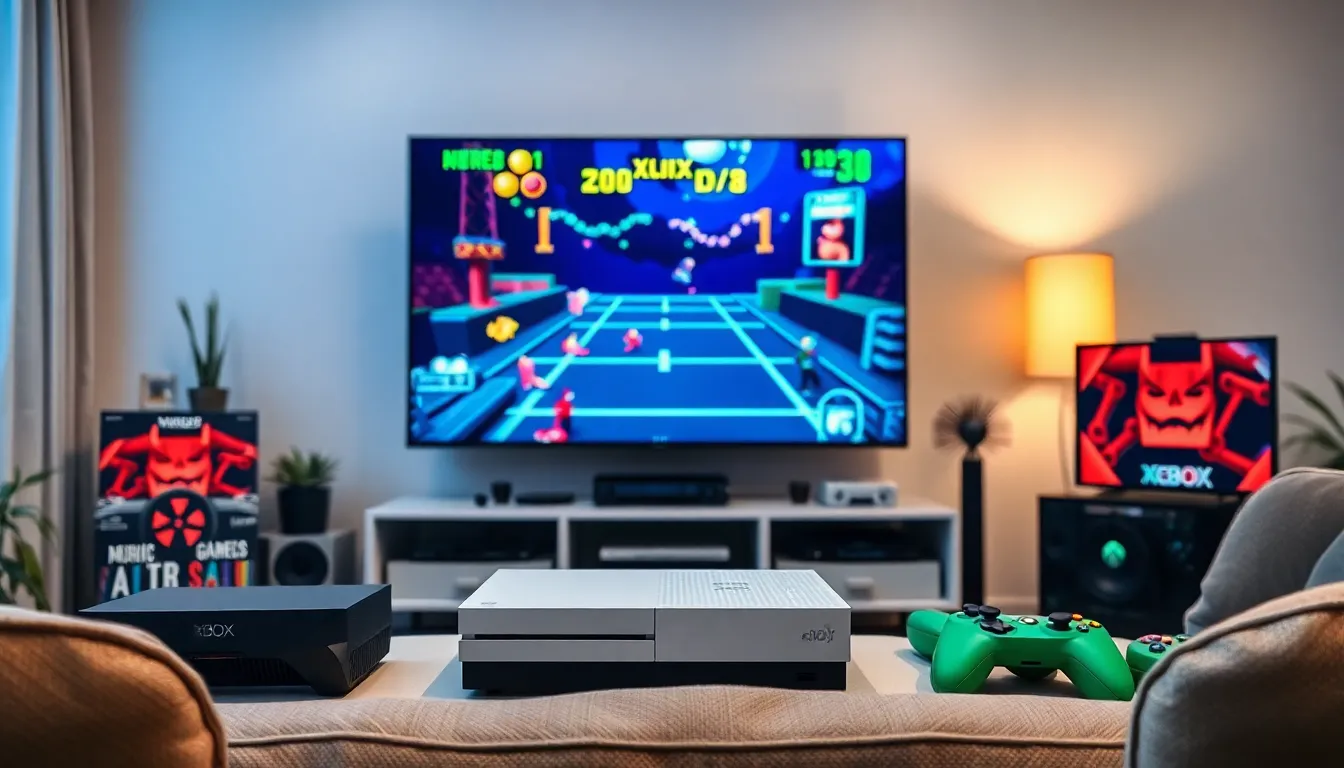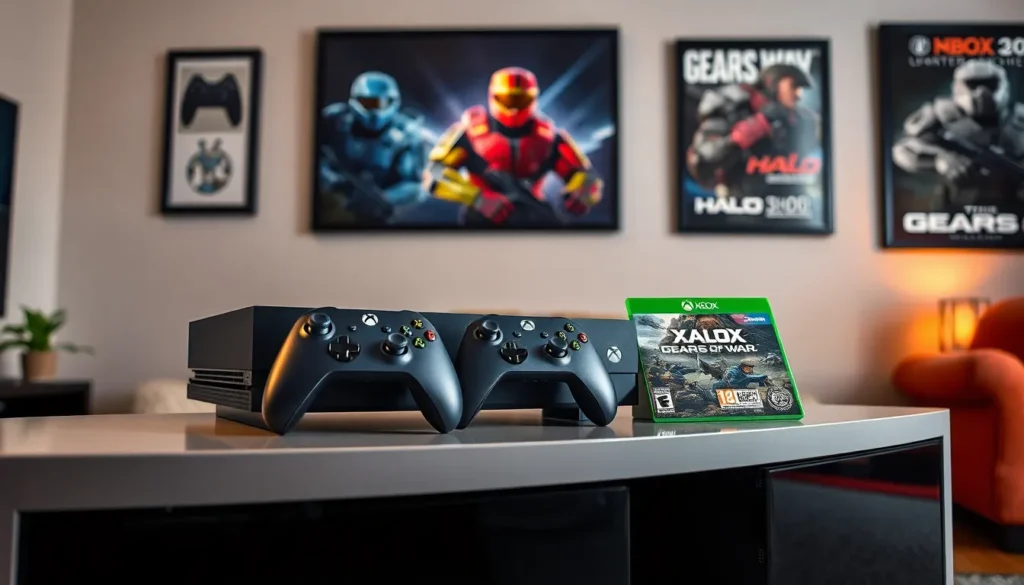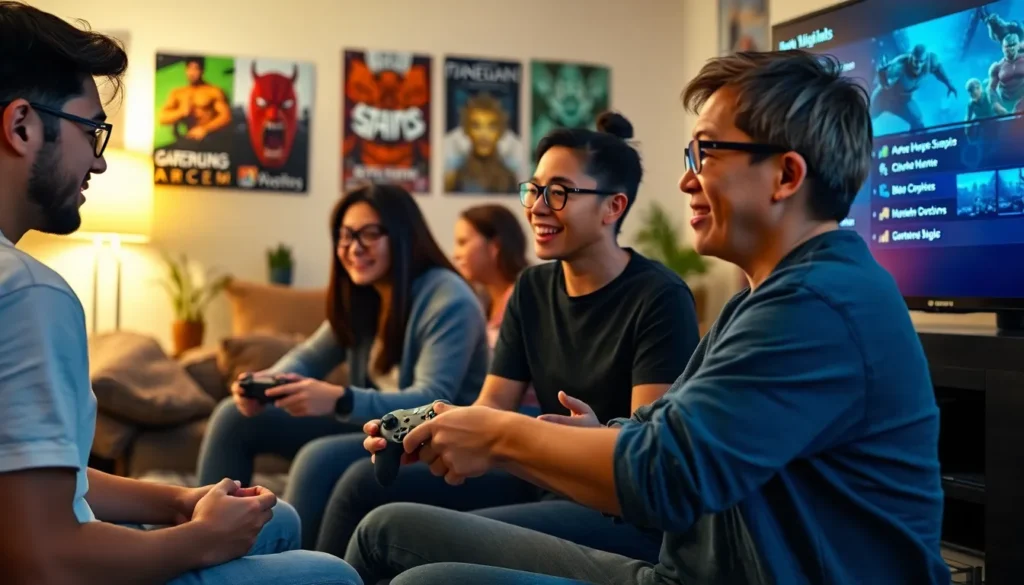Table of Contents
ToggleImagine dusting off that old Xbox game you loved, only to find it’s as playable as a VHS tape in a world of streaming. Thankfully, Xbox has cracked the code with its backwards compatibility feature, bringing nostalgia back to life. Gamers can now relive classic titles without the hassle of outdated consoles.
This isn’t just a trip down memory lane; it’s a full-blown joyride. With Xbox’s commitment to preserving gaming history, players can enjoy fan-favorite titles from previous generations. Whether it’s racing through the streets of Liberty City or saving the galaxy from intergalactic threats, the past is just a click away. So grab your controller and get ready to dive into a treasure trove of gaming goodness. Who knew that playing old games could feel so fresh and exciting?
Overview Of Xbox Backwards Compatibility
Xbox’s backwards compatibility feature enables gamers to play a vast array of classic titles from older consoles. This functionality extends to Xbox One, Xbox Series X, and Xbox Series S. Over 600 games from original Xbox, Xbox 360, and Xbox One are available through this feature. Players can enjoy enhanced performance and improved visuals, thanks to powerful hardware.
The feature supports popular games like “Halo,” “Gears of War,” and “Red Dead Redemption 2.” Gamers find it convenient, as no additional purchase is needed for titles already owned on previous systems. Titles can be accessed digitally or through physical discs, ensuring a seamless transition.
More importantly, Xbox continually updates its backwards compatibility library, adding new games based on player demand. This commitment to preserving gaming history allows players to experience beloved titles on modern systems. Players can connect with nostalgic gaming experiences, bringing back memories of earlier generations.
In addition to individual games, Xbox offers features like cloud saves. This makes it easier for players to continue their progress across multiple devices. Additionally, Xbox Live services enhance the multiplayer experience for backward-compatible titles.
Overall, this feature represents Xbox’s dedication to its consumer base. Gamers enjoy access to a rich library, showcasing the evolution of gaming. They can relive their favorite gaming moments, reinforcing Xbox’s mission to enrich the gaming landscape.
History Of Backwards Compatibility

Backwards compatibility has evolved significantly within the Xbox ecosystem. It allows gamers to enjoy classic titles on modern consoles, bridging gaps between generations.
Early Consoles And Compatibility Efforts
Original Xbox launched in 2001, setting the stage for backwards compatibility. Xbox 360 introduced the first wave of this feature in 2005, enabling select Xbox titles to play seamlessly. Within the initial years, Microsoft aimed to support approximately 400 games through software emulation, which was a groundbreaking approach for the time. Players experienced enhanced graphics and performance, transforming older titles into visually appealing gameplay. Early efforts laid the foundation for ongoing developments. Each success fueled demand for broader compatibility among future consoles.
Significant Updates Over The Years
In 2015, a major milestone emerged with the Xbox One’s expanded backwards compatibility list. This update allowed Xbox 360 titles to join the lineup, further enriching the gaming library. By 2020, the Xbox Series X and Series S raised the bar even higher, granting access to over 600 titles across all previous generations. Continual enhancements such as resolution upgrades and frame rate improvements created true next-gen experiences. Player feedback remains crucial, guiding updates to the compatibility library. Microsoft’s dedication to preserving gaming history has forged a deep connection with its community, ensuring cherished experiences are never lost.
Current State Of Xbox Backwards Compatibility
Xbox’s backwards compatibility feature currently supports over 600 games from the original Xbox, Xbox 360, and Xbox One on the latest consoles. This extensive library includes timeless classics such as “Halo,” “Gears of War,” and “Red Dead Redemption 2.” Players can enjoy these titles without making additional purchases, provided they already own them. Continuous updates based on player feedback help tailor the game selection, ensuring that nostalgic favorites remain accessible.
Supported Games And Titles
Microsoft includes a variety of genres in its backwards compatibility catalog. Action, adventure, role-playing, and sports titles represent the diversity gamers experience. Iconic franchises like “Fable,” “Call of Duty,” and “The Elder Scrolls” also make appearances. The ongoing addition of titles maintains player engagement and excitement.
Performance Enhancements
Significant performance boosts accompany backwards compatible titles on newer consoles. Improved graphics and faster loading times greatly enhance the gameplay experience. Anti-aliasing techniques refine the visuals, while increased frame rates contribute to smoother game performance. Cloud saves and improved multiplayer options via Xbox Live further elevate the overall enjoyment, making these classic games feel fresh.
Benefits Of Xbox Backwards Compatibility
Xbox’s backwards compatibility feature offers numerous advantages, especially for gamers eager to experience classic titles. This feature stands as a testament to Xbox’s commitment to preserving gaming history while enriching the user experience.
Preservation Of Gaming History
Preservation of gaming history takes center stage with backwards compatibility. Gamers can enjoy over 600 titles from the original Xbox, Xbox 360, and Xbox One. Classic games, like “Halo” and “Fable,” stay alive, enabling players to revisit and relive memorable gaming moments. Microsoft’s dedication ensures iconic titles remain accessible, allowing both new players and nostalgic fans to appreciate the evolution of gaming. By securing the legacy of beloved franchises, it safeguards they will not fade into obscurity. This feature contributes significantly to understanding gaming’s cultural impact across generations.
Enhanced Gaming Experience
Enhanced gaming experience is another key benefit of backwards compatibility. Access to improved graphics, faster loading times, and smoother gameplay transforms how players engage with older titles. Players experience an optimized gaming environment through increased frame rates and higher resolutions. Titles originally released years ago benefit from advanced graphical techniques and performance improvements, creating a modern feel. Features like cloud saves and enhanced multiplayer options elevate the gaming experience. These enhancements promote a seamless transition from past to present, confirming Microsoft’s commitment to ensuring enjoyment across generations.
Challenges Faced
Xbox’s backwards compatibility feature encounters several challenges. Technical limitations frequently impact the performance of older titles.
Technical Limitations
Older games may experience issues with frame rates or resolution when played on modern consoles. Emulation techniques, while effective, can sometimes fail to replicate original hardware performance, leading to glitches or crashes. Final quality hinges on compatibility with the current system architecture. Odd bugs can appear, as developers aim to balance performance with nostalgia. Testing specific titles for smooth functionality adds complexity, requiring ongoing adjustments.
Licensing Issues
Licensing challenges often create roadblocks for certain games. Name, character, and music rights must be cleared for availability. Neglected or expired licenses can prevent classics from entering the backwards compatibility catalog. Developers may choose not to renew their agreements, limiting access to beloved titles. Clear negotiations must take place before adding games to the library, complicating the process further. As a result, not all fan-favorite games appear on the backwards compatibility list.
Xbox’s backwards compatibility feature stands as a testament to the platform’s dedication to both gaming history and community engagement. By allowing players to access a vast library of classic titles with modern enhancements, it bridges the gap between generations of gaming. The nostalgia of revisiting beloved games is amplified by improved performance and visuals, ensuring that iconic experiences remain alive and well.
Despite the challenges posed by licensing and technical limitations, Microsoft’s commitment to expanding this feature reflects its understanding of gamers’ desires. As the backwards compatibility library continues to evolve, it not only preserves the legacy of classic games but also enriches the current gaming landscape, inviting both new and veteran players to enjoy timeless adventures.



